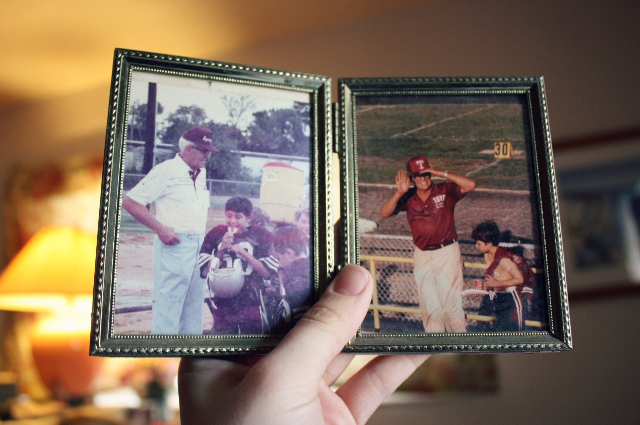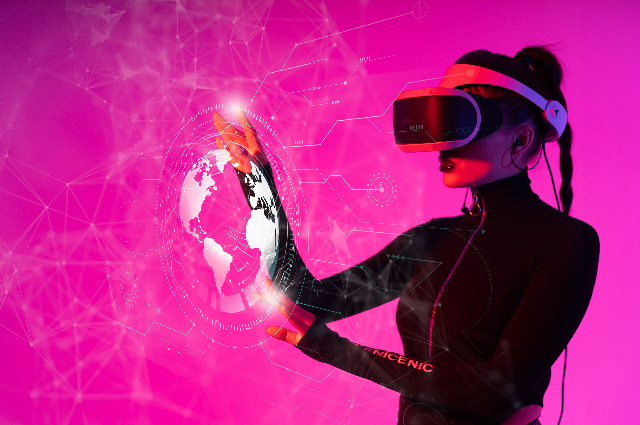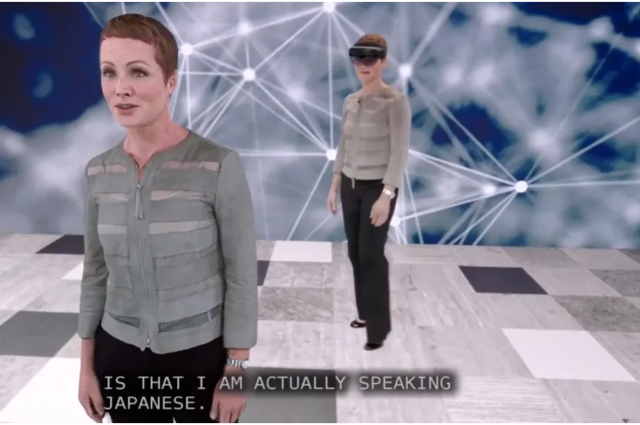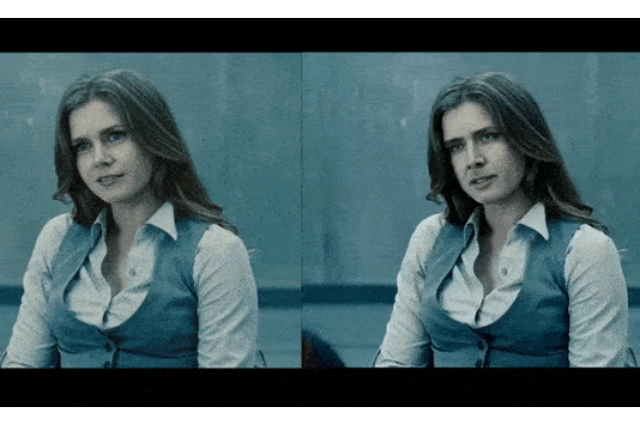"If I knew that would be the last time I would see you, I would hug you a little tighter, kiss you a little longer, and tell you that I love you one more time." - every heart that loses a dearest heart feels
Every heart including you, and I will feel the above saying in any of the situations in our lives. Isn't it? yeah, it seems.
Yeah! The pain of losing a loved one is a universal experience that every human being will go through at some point in their life. It is a reality that we cannot control, no matter how much we wish we could. The final moments of a person's life are unknown to us, and we cannot stop death from happening. This can be a difficult and painful realization to accept, but it is a truth that we must come to terms with.
When we lose someone we love, the pain can be overwhelming and can continue for a long time. It can feel as though a part of us is missing, and we may struggle to find meaning or purpose in life without that person. Grief is a complex and multifaceted emotion, and it can take time and effort to navigate through it. It is important to seek support from loved ones and to take care of ourselves during this difficult time.
"I can no longer hear their words of wisdom here after"
"If they were still here, they would offer me some suggestions that could help to overcome my hard situation"
Losing someone can trigger a range of intense emotions, which can be difficult to process. And the universal truth is
"The most impossible thing in the world is that we can't have the dead person alive anymore" - but can we make this possible?
Yeah, it is possible now:)

Photo by Lindy Baker on Unsplash
THE DIGITAL AFTERLIFE
Digital afterlife is the concept of preserving a person's digital identity and data after they pass away. With the increasing importance of technology in our lives, many people have accumulated a significant amount of digital data, such as social media profiles, emails, photos, and other online activities, which can now be preserved and accessed after they have died.
I got it, now you are having a doubt in your mind right? Haa!
No, the Digital afterlife for dead people is not only restricted with social media, but it is also possible to interact with them in real-time (can see your eyes are expanding! Is that so?)
Is that interesting? Definitely!
Artificial intelligence (AI) has become a tool to assist individuals in coping with the loss of their loved ones. By analyzing various types of data such as photos, videos, and social media posts, AI can generate digital versions of deceased individuals that can simulate their voice, behavior, and even conversation. This technology can provide a sense of comfort to those who are grieving by allowing them to interact with a virtual representation of their loved one, providing a sense of connection even after their passing.
With the advancements in holograms and AI technology, it is now possible to create a digital representation of a deceased person using their personal data. This digital representation can take the form of a hologram that can simulate the person's behavior and interact with others, creating the illusion of the person still being alive.
Digital afterlife can have a variety of applications, such as preserving a person's legacy, providing comfort to grieving loved ones, and even enabling deceased individuals to continue to participate in society. However, there are also ethical and legal considerations to take into account, such as privacy and consent issues, and the potential psychological impact of interacting with a virtual representation of a deceased person.
Emotional Responses to Interacting with Virtual Representations of Deceased Individuals
Virtual representations of deceased individuals, such as chatbots or avatars, are often designed to simulate a conversation or interaction with the deceased person. For example, a chatbot might be programmed with the deceased person's speech patterns and personal information, allowing the user to have a virtual conversation with them. Similarly, an avatar might be created to represent the deceased person, allowing the user to interact with a lifelike representation of them.
Studies have found that individuals who interact with these virtual representations can experience a range of emotions. Some individuals report feeling a sense of comfort and closeness to the deceased person, while others may experience sadness or even fear. These emotional responses can vary depending on the individual and their relationship with the deceased person, as well as the quality of the virtual representation.
One study published in the journal Computers in Human Behavior found that individuals who used a chatbot to interact with a deceased loved one reported feeling a greater sense of comfort and connection compared to those who did not use the chatbot. Another study published in the Journal of Medical Internet Research found that individuals who interacted with a virtual avatar of a deceased loved one reported a decrease in grief symptoms.
However, it is important to note that virtual representations of deceased individuals should not be seen as a substitute for traditional methods of grief and loss. While these technologies can be a helpful tool for some individuals, they cannot replace the social support and rituals that are often important for coping with grief and loss. Funerals, memorials, and other traditions can provide a sense of closure and community support that may not be possible through virtual interactions alone.

Photo by cottonbro studio: pexels
Ethical Considerations in Creating and Using Virtual Representations of Deceased Individuals
Creating and using virtual representations of deceased individuals raises a number of ethical considerations. These considerations include issues related to consent, privacy, and cultural sensitivity.
- First and foremost, obtaining consent from the deceased person's family or next of kin is crucial before creating a virtual representation. Without consent, the creation and use of a virtual representation may be seen as disrespectful or even harmful to the memory of the deceased person. Family members may also have concerns about the accuracy and appropriateness of the representation, as well as about who has access to it.
- Privacy is also an important consideration. Personal information about the deceased person should be handled with care and respect, and should not be shared without the permission of the family or next of kin. Additionally, virtual representations should be created and used in a way that respects the privacy of others who may be depicted or referenced in the representation.
- Cultural sensitivity is another important ethical consideration. Different cultures have different beliefs and practices surrounding death and afterlife, and virtual representations may not align with these beliefs. It is important to consider the cultural and religious perspectives when creating and using virtual representations of deceased individuals, and to ensure that they are respectful and appropriate.
Other ethical considerations may include issues related to the commercialization of virtual representations, the potential for harm to individuals who may become overly attached to the representation, and the need for transparency and honesty about the limitations of the technology.
Revolutionary Technologies Evolved in Transforming the Future
Holography:
A hologram is a three-dimensional image created using laser technology. It is produced by splitting a laser beam into two parts: the object beam and the reference beam. The object beam is directed at the object being recorded, while the reference beam is directed at a recording medium, such as photographic film or a photosensitive plate.
When the object beam and the reference beam intersect on the recording medium, they interfere with each other, creating a unique pattern of light and dark fringes that are recorded on the medium. When the hologram is illuminated with a laser beam, it recreates the original object in three dimensions, appearing to float in space.
Holograms have a wide range of applications, including in security features on credit cards and banknotes, as well as in art and entertainment. They are also used in scientific and medical fields for visualization and data analysis purposes.

Image by Elias from Pixabay
Hologram and AI
Holograms and AI are two technologies that have seen significant advancements in recent years. Holograms are three-dimensional images created through the use of lasers, which create the illusion of depth and dimensionality. AI, on the other hand, refers to the ability of machines to perform tasks that normally require human intelligence, such as learning, reasoning, and problem-solving.
Holograms and AI can be used together to create immersive and interactive experiences. For example, holographic images can be animated and controlled by AI to create virtual assistants or characters that can respond to voice commands and engage in conversation with users. Additionally, AI can be used to analyze data such as photos and videos to create lifelike holographic representations of deceased individuals, which can provide a sense of comfort to those who are grieving.
However, there are also ethical and social considerations that must be taken into account when using these technologies. For instance, the use of AI in holographic representations of deceased individuals raises questions about privacy and consent, and the potential psychological impact of interacting with virtual representations of loved ones.
Virtual Reality
Virtual reality (VR) can also play a role in creating a digital representation of a deceased person. By using VR technology, it is possible to create a more immersive and interactive experience for users, allowing them to virtually enter a space or environment where the digital representation of the deceased person is present. This can create a more realistic and emotionally impactful experience, as users can interact with a 3D representation of the person and the environment around them.
In this context, VR can be used to create a digital afterlife or memorial space where people can interact with a digital representation of their loved ones who have passed away. This can include creating virtual environments that replicate a person's favourite places, such as a park or beach, or even simulating conversations or interactions with the deceased person. However, as with the use of holograms and AI, the ethical and legal implications of using personal data and creating virtual representations of deceased individuals must be carefully considered.

Photo by Oleksandr Pidvalnyi: pexels
Natural Language Processing (NLP)
Natural Language Processing (NLP) is an important component in creating digital representations of deceased individuals because it can help to recreate their unique way of speaking and communicating. Human beings communicate in a variety of ways, using different words, phrases, intonations, and patterns of speech that are unique to them as individuals. NLP technology is able to capture these unique features of a person's speech and use them to create a digital representation of that person's conversational style.
This technology is particularly important for creating digital representations of deceased individuals because it allows for a more natural and familiar way of communicating with them. By analyzing audio recordings or written text, NLP algorithms can identify the unique patterns and features of a person's speech and use this information to create a chatbot or conversational AI program that mimics their style of speaking. This creates a more immersive and emotionally impactful experience for users who can interact with the digital representation of the deceased person in a way that feels natural and familiar.
Furthermore, NLP can also be used to analyze and interpret large amounts of written or spoken data about a person, such as their emails, social media posts, and other forms of communication. This data can provide valuable insights into a person's personality, interests, and relationships, which can be used to create a more accurate and realistic digital representation of that person.

Source: https://sciencepost.fr/
Deepfake Face Technology
Deepfake technology is a type of artificial intelligence that is used to create convincing and realistic fake videos or images of people. It involves using algorithms to manipulate and superimpose images, sounds, and videos to make it appear as though a person is saying or doing something that they did not actually say or do.
In the context of digital afterlives, deepfake technology can be used to create virtual representations of deceased individuals by using existing footage and images of them. This can include using video and audio recordings of the person to create a realistic digital version of their appearance, voice, and mannerisms.
While this technology has the potential to create highly realistic and lifelike representations of deceased individuals, it also raises ethical concerns. For example, it may be difficult to obtain consent from the deceased or their loved ones to create a digital representation of them. Additionally, the use of deepfake technology may perpetuate false or misleading information about the deceased, potentially harming their reputation or causing distress to their loved ones. Therefore, the use of deepfake technology in creating virtual representations of deceased individuals should be approached with caution and careful consideration of ethical implications.

Creating a Digital Representation of a Deceased Person
Creating a digital representation of a deceased person involves three main steps: collecting data about the person's speech, mannerisms, and facial expressions; creating a virtual representation of the person using holograms and AI; and considering the ethics and legality of using personal data in this context.
A. Collecting data about the person's speech, mannerisms, and facial expressions
To create a digital representation of a deceased person, data needs to be collected about their speech patterns, mannerisms, and facial expressions. This can be done through various means, such as analyzing recordings of their voice, facial expressions, and body language in videos, photos, or even social media posts. This data is then used to create a digital profile of the person's unique characteristics and personality traits, which can then be used to generate a virtual representation of them.
B. Creating a virtual representation of the person using holograms and AI
Once the data has been collected, AI can be used to analyze and process it, creating a digital model of the deceased person's likeness. This digital model can then be used to generate a holographic representation of the person, which can simulate their appearance, behavior, and even voice. This can create an immersive and interactive experience for users, allowing them to interact with a virtual representation of the deceased person.
C. Ethics and legality of using personal data
Creating a digital representation of a deceased person using personal data raises ethical and legal concerns. There are concerns about the privacy and consent of the deceased person, as well as their family members and loved ones. It is essential to obtain permission before using someone's personal data, especially if the person has passed away. Additionally, there are also questions about the potential psychological impact on the deceased person's family members and loved ones and the ethical implications of using personal data to create digital representations. As such, it is essential to approach the creation of digital representations of deceased individuals with sensitivity and care, ensuring that the technology is used in a way that respects the privacy and dignity of the deceased and their loved ones.
The Role of Virtual Representations in Bereavement Support and Therapy
Virtual representations of deceased individuals have the potential to play a role in bereavement support and therapy. Here are some ways in which they may be used:
- Facilitating expression of emotions: Virtual representations may provide a safe and supportive environment for individuals to express their emotions and feelings related to the loss of a loved one. This may be especially beneficial for those who have difficulty expressing their emotions in traditional therapy settings.
- Providing a sense of presence: Virtual representations may help individuals feel a sense of presence of their deceased loved ones. This may help individuals feel less isolated in their grief and provide a source of comfort and support.
- Promoting healing: Virtual representations may facilitate healing by allowing individuals to revisit positive memories and experiences with their deceased loved ones. This may help individuals find meaning in their loss and promote resilience in the face of grief.
- Helping with closure: Virtual representations may provide a sense of closure for individuals who were unable to say goodbye to their loved ones before they passed away. Being able to interact with a virtual representation of their loved one may help individuals feel like they have had a chance to say what they needed to say and find a sense of closure.
Providing access to bereavement support: Virtual representations may provide individuals with access to bereavement support and therapy when traditional in-person options may not be available or feasible. This may be particularly helpful for individuals who live in remote areas or who are unable to leave their home due to physical or mental health issues.
Real-time priceless feel
Interacting with Deceased Family Members
A South Korean AI firm, DeepBrain AI, has launched a new service that allows people to communicate with their deceased loved ones using a digital avatar. Re;memory, the AI-powered service, uses machine learning to process photos and video footage of the deceased to create a digital twin that can interact with the living as if they are on a video call. The digital avatar can answer questions and share memories from the past, mimicking the expressions, mannerisms, facial tics, and speech patterns of the deceased individual.
DeepBrain AI creates the digital avatar by collecting videos and photos of the deceased person and filming a seven-hour pre-interview with the individual before their death to develop the virtual version. The company then uses AI to synthesize the individual's expressions, facial tics, and speech patterns with natural language processing technology, making real-time conversations with the departed individual possible. The service is expected to cost between $12,000 and $24,000 to create a virtual person, and $1,200 each time a person wants to have a conversation with it in Re;memory's private memorial showroom.
The technology is best suited for people with terminal illnesses such as cancer who could spend several hours in front of a camera to allow the software to learn their mannerisms and collect voice data. The subjects are also encouraged to write journals about their lives, including childhood memories, to be saved into the system. DeepBrain's Business Development Manager, Joseph Murphy, says that Re;memory's digital avatars can be astonishingly realistic, and the more subjects journal, the more realistic the experience will be.
The service is one of the latest AI-powered technologies in the funeral industry that allows people to use digital memories to communicate with their deceased loved ones. Previously, PetaPixel reported on a grandmother who was able to answer questions at her own funeral with the help of new AI-powered "holographic" video technology.
(after watching the video) The authentic smiles and tears made it all worthwhile. What else we need? It's incredible.
Harry Caray
Harry Caray was a famous American sportscaster known for his distinctive voice and enthusiastic personality. He was best known for his work as a play-by-play announcer for several Major League Baseball teams, including the Chicago Cubs, St. Louis Cardinals, and Oakland Athletics.
Caray's broadcasting career spanned over five decades, and he was widely regarded as one of the most iconic and beloved announcers in sports history. He was known for his signature catchphrases, such as "Holy Cow!" and "It might be, it could be, it is! A home run!"
Caray was also known for his love of the game of baseball and his passion for interacting with fans. He was often seen engaging with fans in the stands and signing autographs before and after games. He was known for his ability to connect with fans and make them feel like they were a part of the game.
Caray passed away in 1998 at the age of 83, but his legacy lives on in the world of sports broadcasting. He has been posthumously inducted into the Baseball Hall of Fame and the National Radio Hall of Fame, and his signature catchphrases are still remembered and used by fans and broadcasters alike.
That fan moment: In 2022, during the annual Field of Dreams game, a hologram of the late sports commentator Harry Caray made an appearance during the 7th inning stretch. Caray was well-known for his high-energy and exaggerated commentating style, particularly during Cubs games. The hologram was likely intended to tap into the nostalgia and sentimentality of the Field of Dreams game, which pays homage to the classic baseball movie of the same name.
However, the use of the Caray hologram seemed to have missed the mark with many fans. Instead of excitement, the sudden appearance of the hologram was met with a mixed response. In fact, many fans found the experience a bit unsettling, with some describing the hologram's lifeless eyes as a contributing factor to their unease.
The use of holograms in sports and entertainment is still relatively new, and it is not uncommon for these experiences to be met with mixed reactions. The Caray hologram, in particular, highlights the potential challenges in creating an emotionally authentic experience that is respectful to the memory of a deceased individual. It is important for creators and producers to carefully consider the potential emotional impact of holographic technology and to be mindful of how fans and the public may react to these types of experiences.
The happiness from the fans face speaks a lot!
Other news are given below
Conclusion
The use of artificial intelligence to create digital clones of deceased individuals for the purpose of communicating with loved ones is a remarkable advancement in technology. While it may seem eerie to some, it offers a unique opportunity for people to continue interacting with their loved ones even after they have passed away. The technology used in this process involves advanced image synthesis, natural language processing, and expert psychological evaluation. With the increasing capabilities of AI, it is exciting to consider the possibilities for future developments in this area. However, it also raises important ethical questions and concerns regarding the impact on grief and mourning processes. It is crucial to carefully consider the implications of these advancements and ensure that they are used in a responsible and respectful manner.
The world's most notable events are birth and death and both cannot be decided or predicted at the appropriate time; we may be able to foresee the itinerary, but we have no control over the outcome. Birth brings joy, while death often brings sorrow. The death of a loved one can cause immense grief, fear, and stress for family members, as demonstrated in the video above. Everyone is anticipating the time when they will be able to see their deceased loved ones again. But now we can have that miracle to be happened, which is previously impossible. What else do we require? "We can't bring the dead back" is the only thing that is truly impossible, as I said at the starting of the article, yet hologram and AI technology have changed this perception. WOW! SIMPLY WOW!
. . .
References:
- https://sciencepost.fr/
- https://passionfortravels.com/
- https://www.analyticsinsight.net/
- https://builtin.com/
- https://www.quantamagazine.org/
- https://www.analyticsinsights.net/
